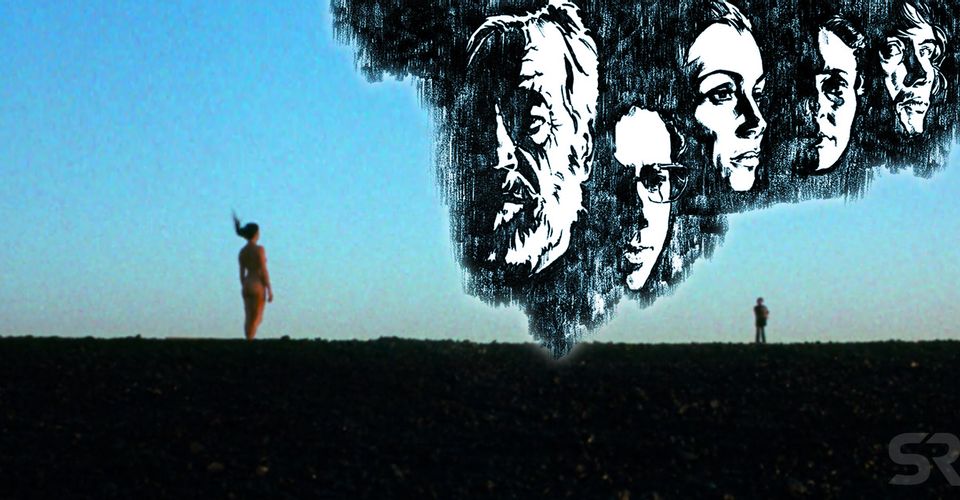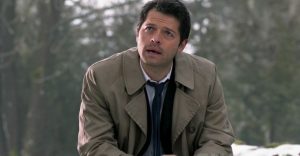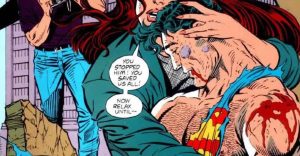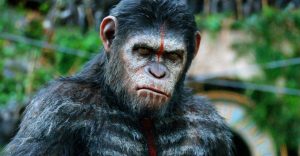The Other Side Of The Wind Ending: Real Meaning & Theories Explained

WARNING: Spoilers for The Other Side of the Wind.
What does the ending of The Other Side of the Wind, the long-awaited final film from Orson Welles, actually mean? For that matter, what’s the whole movie about? Previously one of cinema’s great unfinished works, the last project of seminal filmmaker Welles has been completed and released on Netflix.
With a development history that spans across four decades, The Other Side of the Wind has long been an elusive treasure to cinephiles around the world, documentaries and books on the subject only barely satiating curiosity for what the Citizen Kane director had been working on. Now that we have a cohesive version pieced together by editor Bob Murawski and a slew of cast and crew who were involved in the shooting process, we can start considering what Welles was up to with the complicated picture.
Watch: The Other Side Of The Wind Trailer
It’s not hard to see why the movie went incomplete for so long. A mockumentary-cum-parody about the struggled shoot of an art-house film, the work charts the 70th birthday, and last day alive, of one Jake Hannaford, portrayed by John Huston, a fictional American director, the picture uses multiple angles, perspectives and textures, with a frenzied editing style that moves from angle-to-angle at swift intervals. There’s so much to take in and make sense of that by the end it’s easy to have missed details and feel a bit miffed. Here’s a look at The Other Side of the Wind‘s ending, and what it all might mean.
- This Page: The Other Side of the Wind’s Ending Explained
- Page 2: What The Other Side of the Wind’s Ending Really Means
What Actually Happens The Other Side of the Wind’s Ending?

The bulk of The Other Side of the Wind is set at a party at an Arizona ranch for Hannaford’s birthday. Featuring press, colleagues, business associates, old friends and fans, the get-together centers on a viewing party for his in-progress new movie, entitled The Other Side of the Wind, an erotic art-film inspired by European filmmaking of the ’60s. The drama, as such, comes from following Hannaford and the other attendees as they discuss the aging creator’s career and the film industry, while it’s gradually revealed that Hannaford has run out of money and is unlikely to finish the project and fears his career may end as a result.
A through-line among all the different faces and conversations comes in the form of a labored screening of Hannaford’s footage that’s interrupted twice by power outages before they move the party to a local drive-in theater. Hannaford gets increasingly drunk while doing his best to avoid giving any of the swirling documentarians and reporters straight answers. Industry pals of his such as Billy Boyle (Norman Foster), an ex-child star, and Brooks Otterlake (Peter Bogdanovich), a former under-study of Hannaford’s turned successful director who provides the opening narration, defend the aloof director while presenting context and back-story for his storied past through their conversations. A recurring motif is the absence of The Other Side of the Wind leading man Jack Dale (Bob Random), who only shows up at the end of the party.
That’s all framework for The Other Side of the Wind‘s ending. At the drive-in, Otterlake reveals he won’t be providing funding for the film to be finished, effectively ending he and Jake’s relationship. Soon after, an emotional Hannaford lashes out at a nosy reporter, an encounter which cements that he is unlikely to return to the height of his powers in the industry. Jake drives off in his sports car, swinging by the ranch to find a just-arrived Jack Dale. Dale refuses a rife, and Hannaford drives off alone to what will be his death, as the leading woman from the movie-in-a-movie remains the last one at the drive-in watching his footage – the one person who it spoke to.
Related: The 25 Best Films on Netflix Right Now
How Does Jake Hannaford Die In The Other Side of the Wind?

Despite heavily teasing the death of its subject in the opening sequence, The Other Side of the Wind doesn’t actually show Jake Hannaford die. Of course, the situation is pretty clear; we learn at the start that he died in a car wreck, telling the audience obliquely what happens after he speeds off from Jack Dale.
Totally intoxicated and having lost his fortune, movie and star, the question of whether Hannaford died by suicide or accident is kept ambiguous, and rightly so. This uncertainty is totally in keeping with the overall approach of the film; how Jake dies isn’t as important as the final steps in his unreturnable descent.
What Does “The Other Side of the Wind” Mean?

The Other Side of the Wind, the film-within-a-film, is a riff on Euro-centric indie filmmaking of the ’60s that was avant-garde and extremely influential. There’s profuse amounts of sex and nudity, some violence and the emphasis is on tone and emotion over plot and specific coherence. A selection of scenes are shown, several with very little connective tissue to each other beyond Jack Dale, the male star and his female counterpart, an unnamed character played by Oja Kodar, who remains unnamed and silent in both Hannaford’s footage and the mockumentary.
The fake movie is a key pillar in Orson Welles’ commentary on contemporary Hollywood. The film was intended to be Hannaford’s comeback, but progress had completely stalled and Jake was swiftly running out of possible funding sources. Early on we see a studio executive leave a screening of existing footage frustrated both by the incoherence of what was being shown and Jake’s absence – what was once an enigmatic auteur had become a grating artist studios were no longer interested in dealing with. It’s a mirror of Welles, who – as the film points out – had been in exile for twenty years before starting making The Other Side of the Wind at the height of New Hollywood.
As for what the title, which the film purports to take from the movie-within-a-movie, it’s obviously fitting of the avant-garde style of filmmaking. What Welles was meaning on a grander scale, though, is a mystery. It may be as simple as wanting to show the “other side” of Hollywood, although as the title was once Sacred Beasts (when the story was about a bullfighter), there’s likely something more spiritual.
Page 2: What The Other Side of the Wind’s Ending Really Means
1
2
About The Author

















